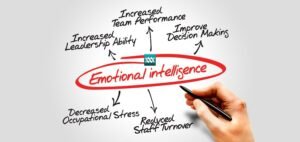Ophthalmic Tonometer has a simple purpose of measuring intraocular pressure (IOP), an essential parameter for most ocular conditions, primarily glaucoma. Ophthalmic Tonometer itself is also witnessing revolutionary changes with the progression of technology, with better accuracy, comfort to patients, and ease.
In this blog, we will see the future of Ophthalmic Tonometer in terms of forecasts and projections that show a rosy future for the diagnosis and treatment of eye conditions.
Growth in Technology
Non-contact Tonometers: Given the ongoing desire for patient comfort and security, non-contact Tonometers will be the preferred option even more. Non-contact Tonometers apply technologies like air-puff or dynamic contour tonometry in an attempt to make intraocular pressure measurements without physically touching the eyes. This eliminates the transmission risk of infection and reduces discomfort to patients, potentially leading to more frequent screening.
Smart Tonometer: With the integration of smart technology in Tonometers, eye care monitoring will be transformed. Smart Tonometers can incorporate Bluetooth, which would enable patients to send intraocular pressure readings home and forward the data to healthcare providers in real-time. This can enable disease management, especially of chronic disease like glaucoma.
Artificial Intelligence (AI): AI will be a strong area in tonometry with better accuracy and even disease identification at an early stage. Machine learning applications will be able to analyze tonometry readings, recognize trends, and offer even more accurate readings. This predictive ability can detect ophthalmologists’ patients with greater likelihood of developing eye disease, resulting in pre-emptive treatment methods.
Increased Portability and Accessibility:
Portable Tonometers: The availability of portable and lightweight Tonometers is likely to enhance accessibility, particularly among rural or underserved communities. Portable equipment allows Ophthalmic Tonometer personnel to carry out eye screenings beyond the normal clinical environment, leading to community-oriented eye care in community health interventions.
Telemedicine Integration: Telemedicine growth has been swift over the past few years, and tonometry will be added to routine remote eye checks soon. Telemedicine check-ups will be possible with Portable Tonometers to make health workers capable of checking the intraocular pressure of patients remotely, enhancing access to eye care by the masses.
Personalized Medicine:
Genetic and Biomarker Analysis: Targeted practice on the basis of genetic predisposition and biomarker analysis may be the future of Ophthalmic Tonometer. Genetic assessment and determination of particular biomarkers, which affect the eye disease, may make treatment plans more effective and focused, working in synergy with the patient’s personal needs.
Enhanced Patient Experience
Less Pain and Anxiety: The development in technology for tonometry seeks to reduce the patient’s experience as painful and anxiety-related as can be, relative to older procedures. Applications such as rebound tonometry, or simply a soft touch on the cornea, are being designed to measure to precision without causing the patient to suffer as much pain. This is especially useful to enable frequent check-ups at the eyes, resulting in early treatment and diagnosis.
Virtual Reality (VR) Integration: Virtual reality holds the ability to transform the patient’s experience of going through tonometry. Virtual reality headsets are no longer utilized to offer immersive environments that take the attention of patients away from tonometry, reducing anxiety and enhancing cooperation, especially in pediatric and anxious adult patients.
Regulatory and Ethical Considerations
Standardization and Certification: With every new technology, government regulatory bodies will be at the forefront of setting standards and certifications for ophthalmic Tonometers. Standardization will guarantee that the devices function according to certain parameters of accuracy, dependability, and safety, which will ensure the trust of healthcare professionals and patients.
Ethical Utilization of Data: The integration of AI and smart technologies into Tonometers puts ethical concerns about data safety and privacy at the forefront. Maintaining the equilibrium between patient data utilization for research while not compromising privacy will be of utmost concern. Strong ethical policies and guidelines must be in place to overcome these challenges and build trust in the utilization of innovative tonometry technology.
Global Relevance and Accessibility
Global Health Initiatives: The future of Ophthalmic Tonometer lies beyond technologically developed areas. Global health initiatives will have the charge to enable the evolution and dissemination of affordable solutions to tonometry that are applicable in resource-poor settings. This approach will address eye health inequalities worldwide.
Training. Capacity Building: To utilize the most advanced tonometry technologies to their fullest, there will be a need for extended training modules for medical professionals. Capacity building activities will help ensure that ophthalmologists, optometrists, and other eye care professionals across the globe have the ability to use newer tonometry devices, thereby increasing the quality of eye care services.
Research and Collaboration
Interdisciplinary Research: The convergence of ophthalmologists, engineers, data scientists, and others from the field will be at the center of future innovation. Interdisciplinary research can contribute towards advancements in tonometry technology, enhancing accuracy, efficiency, and overall understanding of intraocular pressure dynamics.
Clinical Validation and Longitudinal Studies: Longitudinal studies and continuous clinical validation research will be needed to identify the effectiveness and long-term consistency of novel tonometry technology. Real-world data collection of the performance of the instruments will inform future research and development and direct evidence-based practice in eye care.
Electronic Health Record (EHR) Integration: Seamless integration with EHR systems will be paramount for the management of tonometry data. Integration will maximize the diagnostic process, promote data-driven decision-making, and allow for tracking intraocular pressure changes longitudinally by health professionals.
Economic Implications and Cost-Effectiveness
Cost Saving and Affordability: With any new technology, cost saving always comes after as more efficient and common manufacturing processes are achieved. Plans to make next-generation tonometry technologies more affordable will advance their availability and acceptance worldwide, allowing various socioeconomic patients to have early detection and management.
Cost-Effectiveness Analysis: Cost-effectiveness analyses will likely be done by healthcare policymakers and researchers to study the cost implications of implementing new tonometry technology. Knowledge of the economic advantages, such as cost savings in early detection and disease prevention, will become instrumental in supporting investments in such high-tech devices.
New Trends in Tonometry Research
Tonometer with Multiframe Measurement: Next-generation Tonometer can be upgraded to measure other ocular parameters besides intraocular pressure. Researchers are developing instruments that can quantify biomechanical corneal characteristics and other relevant parameters, providing an improved representation of ocular health.
Integration with Imaging Technologies: Integration of imaging technologies like optical coherence tomography (OCT) and ultrasound can provide added diagnostic utility to tonometry. Combination of pressure information with detailed imaging data may enable a more detailed assessment of eye health, allowing for customized treatment regimens.
Environmental Sustainability
Materials and Manufacturing Processes: Increased emphasis on sustainability across sectors might influence the materials and manufacturing processes used in tonometry devices. Companies could look at utilizing environmental-friendly materials and manufacturing processes in order to reduce tonometer production’s impact on the environment and waste.
Read More: Energy-Efficient Industrial Air Heating Solutions: A Green Solution








